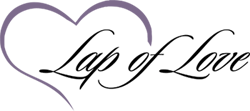Veterinary medicine changes rapidly to meet the needs of our patients and clients. Traditionally, a dental cleaning was a day long procedure followed by an evening of grogginess. Over the past few years another option has presented itself and has proven to be useful in the dental health of our pets.
The Gold Standard for dental cleaning is still done under anesthesia. This allows the entire mouth to be examined, probed and charted along with a full set of oral radiographs to look for disease hidden under the gums. There are numerous lesions that just cannot be seen in an awake patient. As most pets do not appreciate the need for a good oral exam, anesthesia is required to determine the extent of the dental disease.
Pre-anesthetic bloodwork, IV fluids and monitoring that rivals a human hospital are all precautions taken to make this procedure as safe as possible. The anesthetic risk is no greater for an older pet than for a younger one. The anesthetic protocol can be customized to each patient. This allows a quick induction, smooth recovery and less of a “hangover” later in the evening. Although it’s a long day, for both the patient and the owner, a good anesthetic dental cleaning leads to a healthy mouth and, in most cases, a much more comfortable pet.
The newer option is a non-anesthetic dental. It is the same dental scale and polish minus the anesthesia. There are several companies like Animal Dental Care that provide dental cleaning under the supervision of your veterinarian. This option is only for those with very mild tartar and no dental disease and for those pets that are at a high anesthetic risk. Pets with several cardiac disease can have a dental cleaning without the risk and help keep the tartar buildup and infection at a minimum. We must keep in mind that although this is an excellent option, disease under the gum line and at the roots can be missed.
It is up to us to keep our pet’s mouth health. Discuss your options with your veterinarian to thwart the dreaded “doggy breath!”
Article Written by Holly Kiernicki, DVM
Dr. Holly Kiernicki
Lap of Love Veterinary Hospice
(972) 843-1186
drholly@lapoflove.com
Dr. Holly services the greater Dallas, Texas area including:
~ Frisco ~ Denton ~ Allen ~ Fairview
~ Dallas ~ McKinney ~Celina ~ Little Elm
~ Plano ~ The Colony ~ Carrollton ~ Heath
~ Prosper ~ Richardson ~ Rowlett ~ Wylie
~ Garland ~ Mesquite ~ Rockwall ~ Highland Park


No comments:
Post a Comment
Note: Only a member of this blog may post a comment.